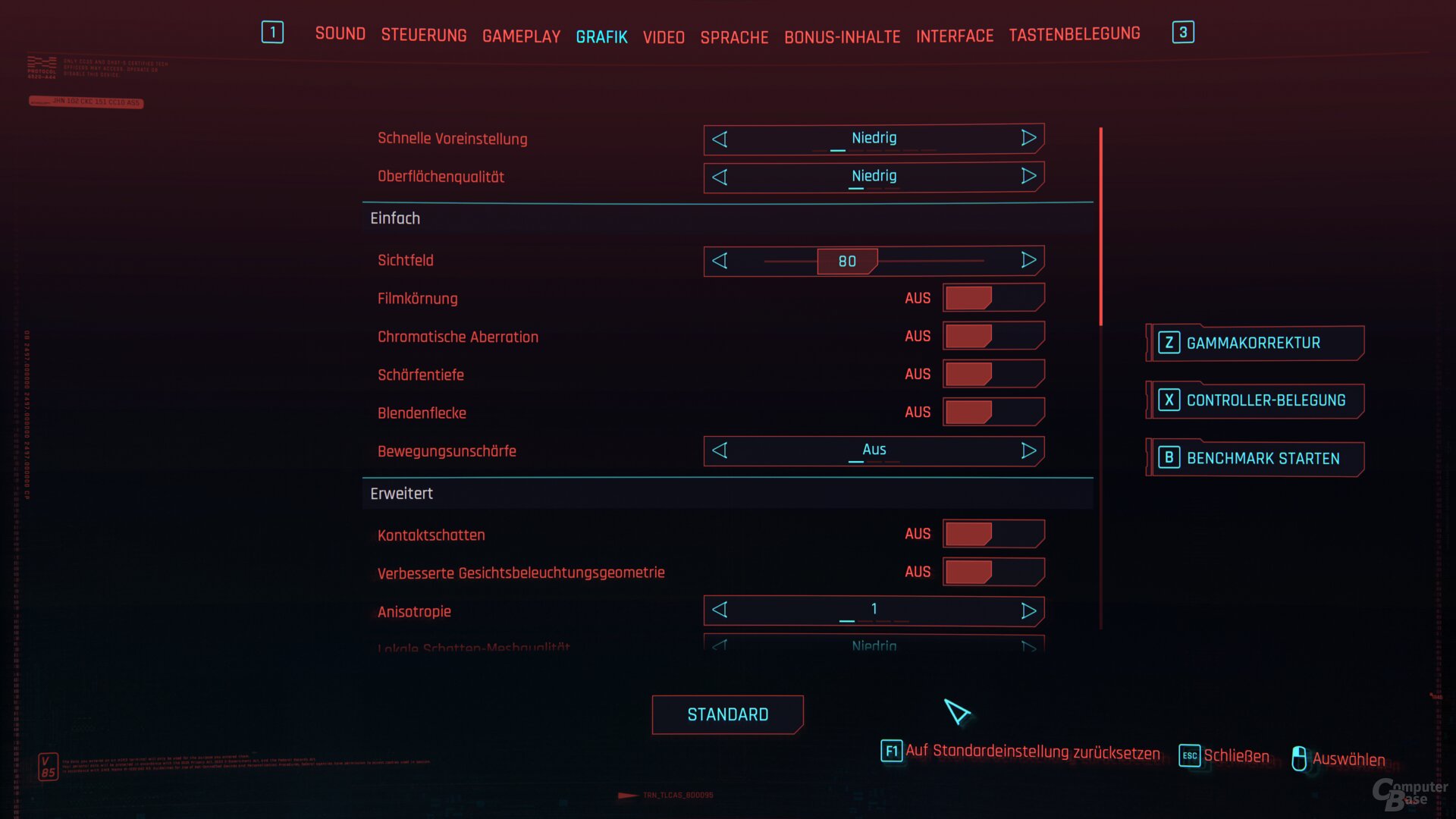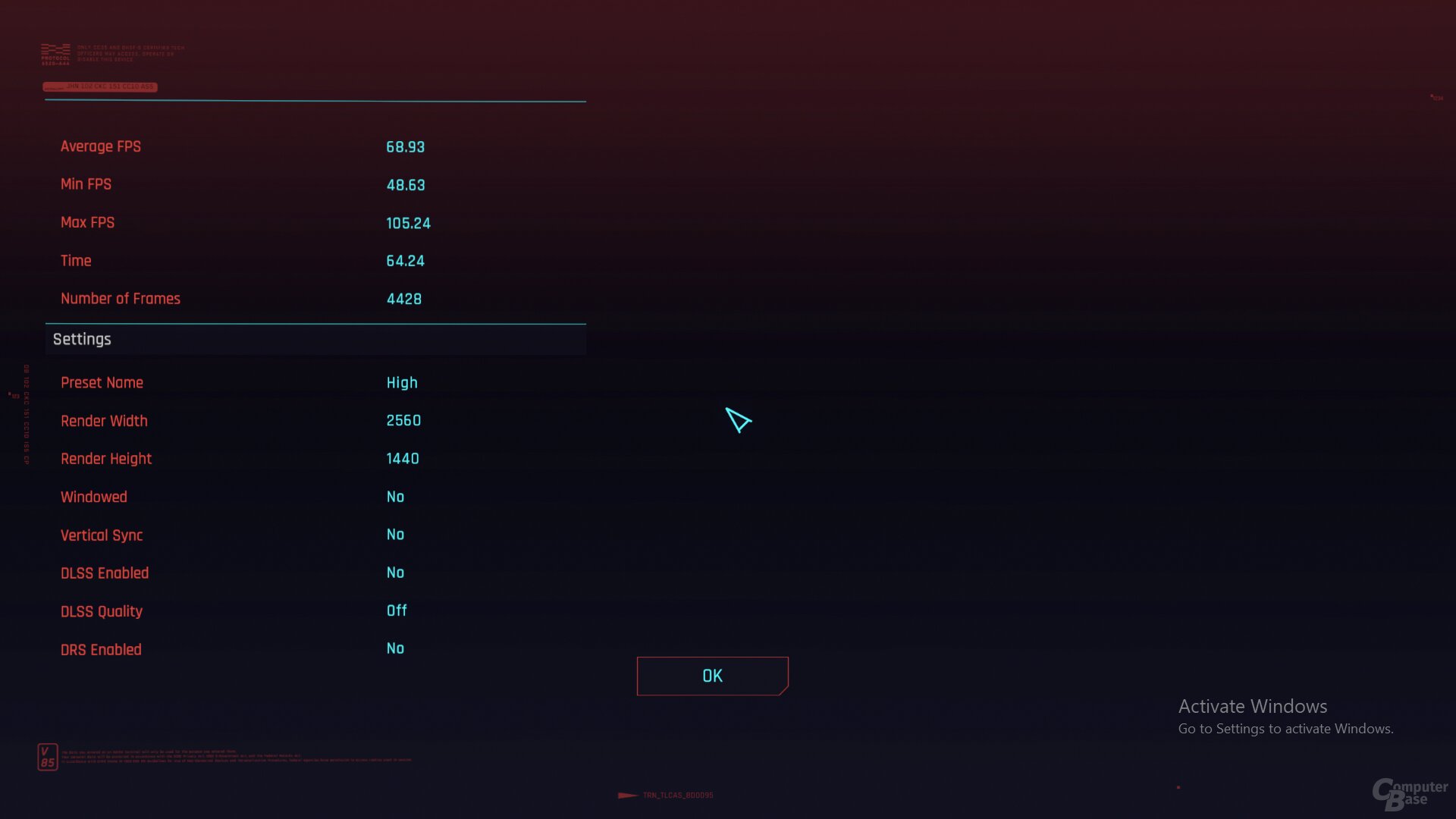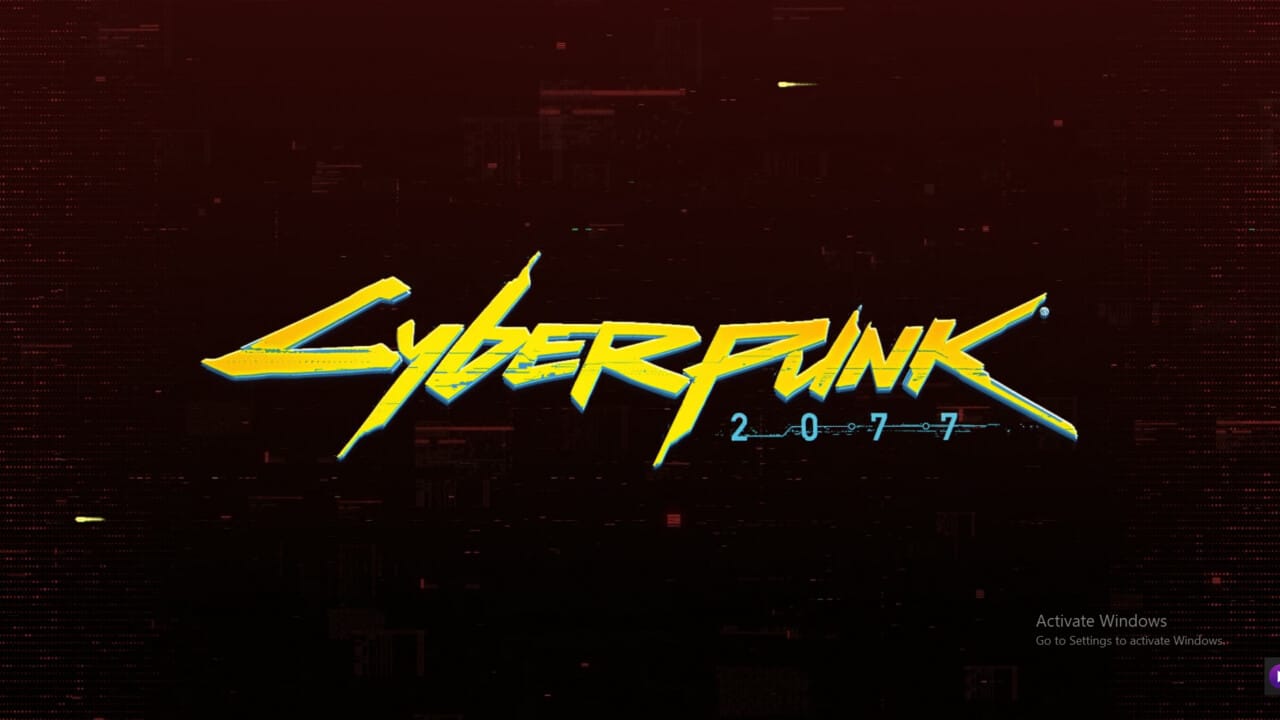Cyberpunk 2077 Patch 1.5 im Community-Benchmark
: Test |CUP | Specs |Config
Patch 1.5 for Cyberpunk 2077 is here. Technically, a lot is changing once again: “Variable Rate Shading” (VSR), FidelityFX Super Resolution (FSR) and new ray tracing effects have been added to the PC. And an integrated benchmark has arrived. Time for a current community benchmark marathon. Here we go!
Updated 02/19/2022 2:10 p.m
Updated 02/17/2022 5:08 p.m
Technical changes with patch 1.5
The release notes for patch 1.5 are long and mainly contain bug fixes and content adjustments.
With variable rate shading and FSR
From a technical point of view, the following innovations are particularly interesting:
- The game now uses Variable Rate Shading (VRS) on compatible graphics cards (RX 6000, RTX 3000 & 2000), which increases performance. The function cannot be switched off.
- In addition to Nvidia DLSS, AMD FidelityFX Super Resolution (FSR) is available to increase the FPS with a reduced internal rendering resolution. This costs more image quality than Nvidia’s DLSS.
- Transparent reflections on the glossy paintwork of some cars can now be displayed using ray tracing (automatically active in the “Raytracing High” preset). In addition, artificial light sources now also cast ray-traced shadows.
So on GPU generations that support VRS and using FSR, patch 1.5 performance will definitely differ from older versions. The editors will clarify what the differences look like in a separate article that compares benchmarks with the old and new status on 21 graphics cards. In this community test, on the other hand, the performance with patches on the readers’ computers should be dealt with in isolation.
The new integrated benchmark
The editors have not used integrated benchmarks for their own tests for years, because they often have little in common with the actual game. In the past, drivers were also specifically optimized for this.
In order to make the community test as easy as possible, the integrated benchmark should be used in this article. The first tests by the editors show that the performance is higher than in the test sequence used for editorial purposes (save game): the test system with the Core i9-12900HK achieves 20 to 30 percent more FPS. The ratios between AMD and Nvidia roughly correspond to those in the savegame benchmark, but there are also almost double-digit differences depending on the scenario.
The Radeon RX 6800 XT can push itself in front of the GeForce RTX 3080 in the integrated benchmark in Full HD with the “Ultra” preset, which it does not succeed in the save game. In the higher resolutions (and thus far away from a CPU limit), the ratios are the same. If ray tracing is used, the integrated benchmark is also less demanding than the save game scene. Accordingly, Radeons move a little closer to the GeForce counterparts.
The built-in benchmark can be accessed from the settings menu by pressing the “B” key. It runs for just over a minute and reports the average FPS achieved at the top of the result overview. This is the value to send in.
The editors have decided to give the community three different detail settings in four different resolutions for testing. Nobody has to test all settings and resolutions, partial results or the results in stages can also be reported.
These four resolutions are to be tested
The 16:9 formats Full HD (1,920 × 1,080), WQHD (2,560 × 1,440) and UHD (3,840 × 2,160) as well as the popular 21:9 format with 3,440 × 1,440 pixels are specified as resolutions, each with one of three different quality settings can be combined.
The quality settings in detail
ComputerBase usually tests with very high quality settings. This community test is broader and should also pick up older systems with setups for Cyberpunk 2077 that are common there. The settings are as follows:

The settings for Low details (Low) 1
Bild 1 von 7
Other important information
The following comments must also be observed in order to ensure the comparability of the submitted test results:
- For the sake of clarity, owners of compatible GeForce cards (GeForce RTX) should use DLSS in combination with ray tracing, owners of compatible Radeon cards should use FSR. Although FSR on GeForce is technically possible, it would unnecessarily complicate the presentation of the results.
- DLSS on Quality is set against FSR on Ultra Quality because both settings are qualitatively closer than DLSS on Quality and FSR on Quality, even if AMD FSR uses a higher rendering resolution internally for this, which means more performance costs.
- If AMD FSR is enabled, the game will automatically enable AMD CAS as well. That’s on purpose. However, if AMD FSR is disabled, AMD CAS remains active. Participants who want to create further benchmarks without FSR and thus without CAS must deactivate CAS manually.
submit results
Measured values determined with the integrated benchmark can and must also be submitted in this reader test using the form below.
The form for reporting the results
In order to minimize sources of error, only the FPS are queried.

When one of the forms is submitted, the CMS automatically drafts a post in the comment thread of that article. Participants can add more information here, however necessarily outside of the preformatted area – it is automatically evaluated by the CMS. The values for ComputerBase are only visible when the contribution is saved.
Please pay attention to the designation
It is important to pay attention to the correct designation, which in any case must always contain information about the GPU, CPU and RAM. The information is to be provided as shown in the following list and the benchmarks already available – this increases the clarity enormously.
- RTX2080, 2700, DDR4-3200CL14
- RTX2080 OC2700, DDR4-3600CL16
- RX6800 M (XYZ Watt)10900K OCDDR4-2933CL14
For GPU and CPU, you can specify whether the chip has been overclocked (OC). In the case of GPUs, it should also be mentioned if it is a mobile chip (Max Q = MQ, Mobile = M, optimal by specifying the TGP). In this case, the distinction between reference and custom design is not made.
The form does not have to be filled out in full; selected results can also be reported. Further measured values can be added later by submitting the form again.
Result screenshots provide more details
In addition to the measured values via the form, screenshots of the results should also be posted in the forum. They make it easier to troubleshoot incorrect settings and ultimately make other evaluations such as CPU and GPU limits possible.
The test results
The following diagrams contain the test results submitted by the community after a plausibility check by the editors. So results don’t appear in real time.
Benchmarks with low details
Benchmarks with high details
Benchmarks with ray tracing and DLSS/FSR
Was this article interesting, helpful or both? The editors are happy about any support from ComputerBase Pro and disabled ad blockers. More about ads on ComputerBase.















